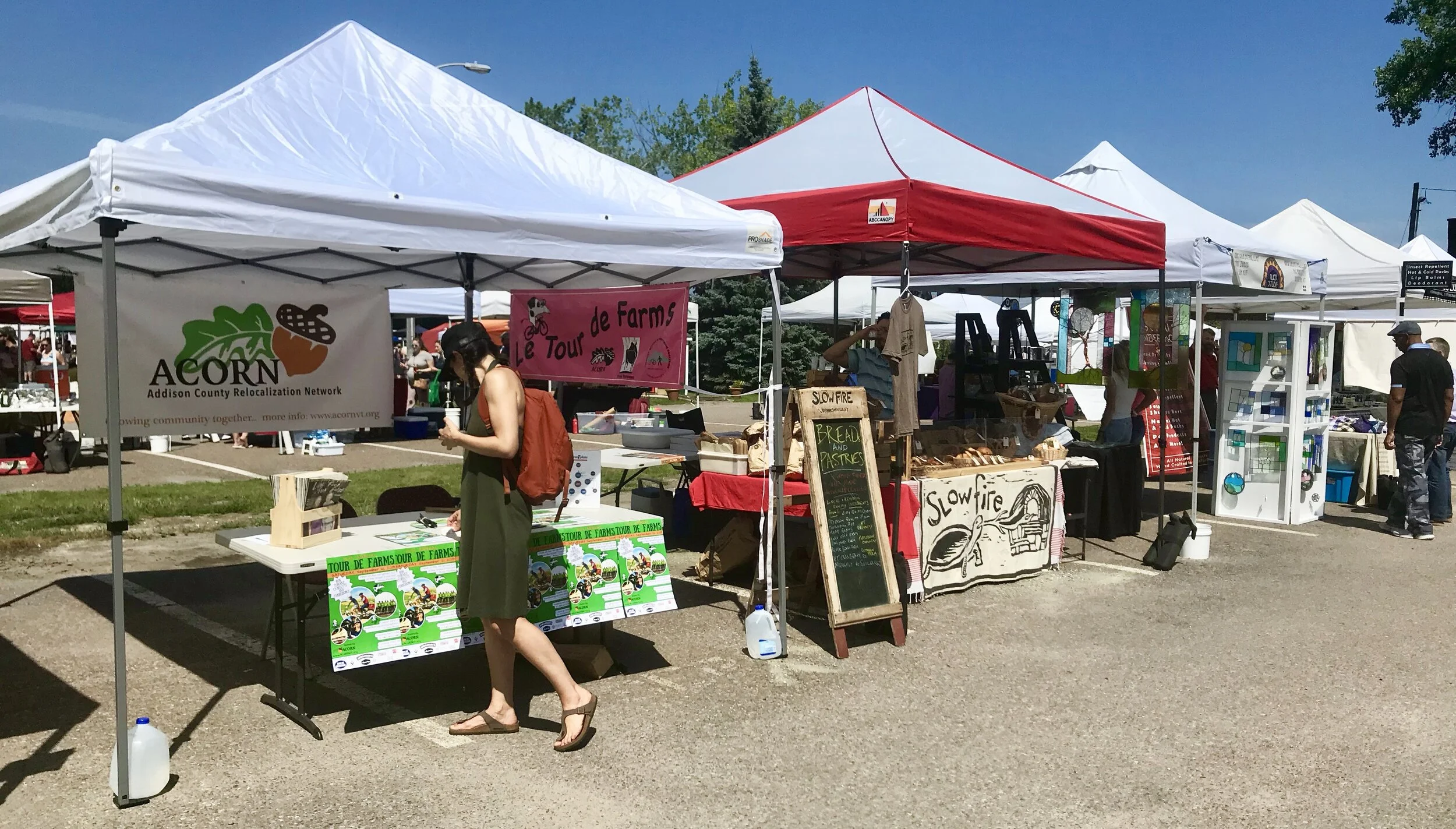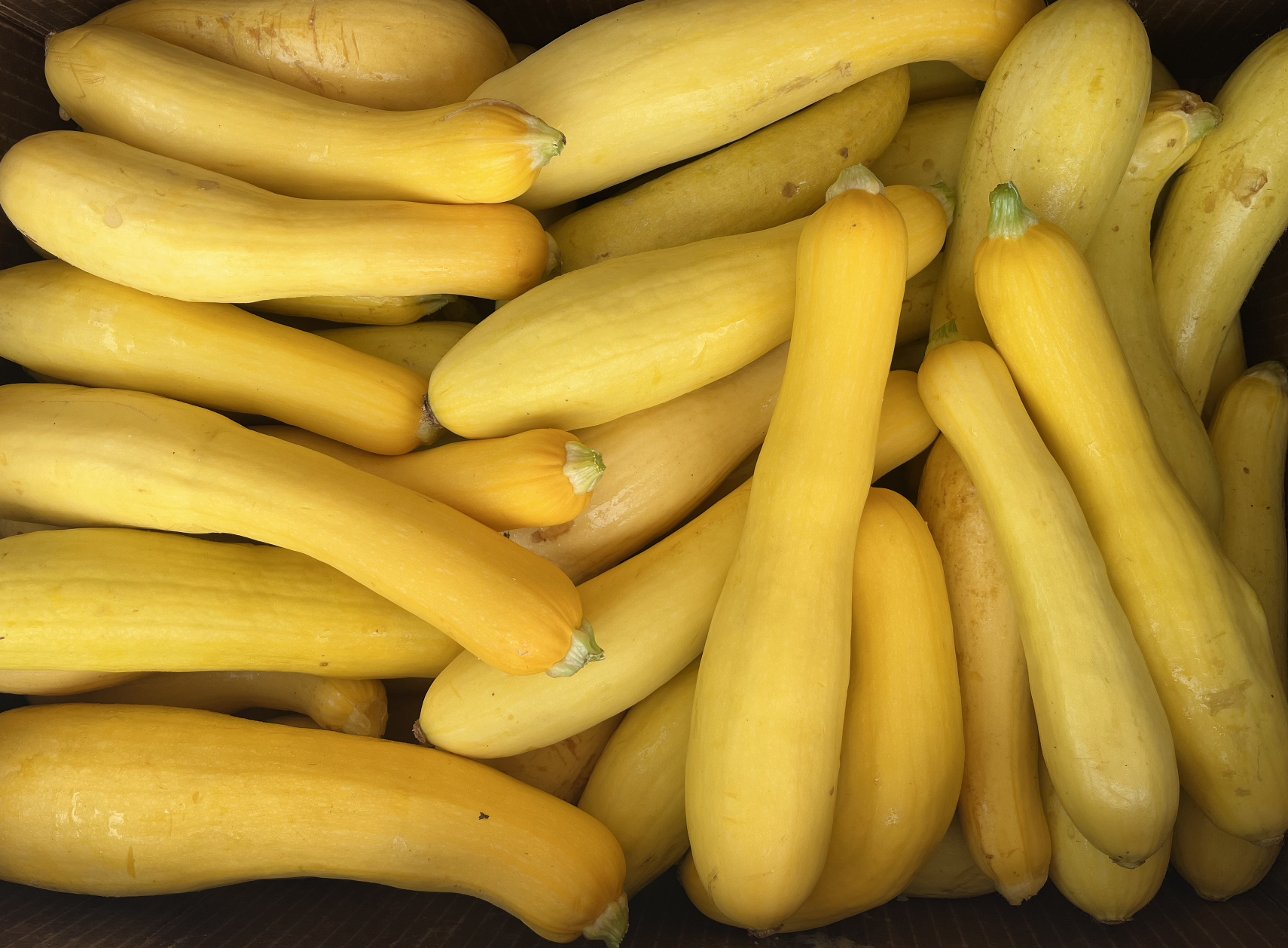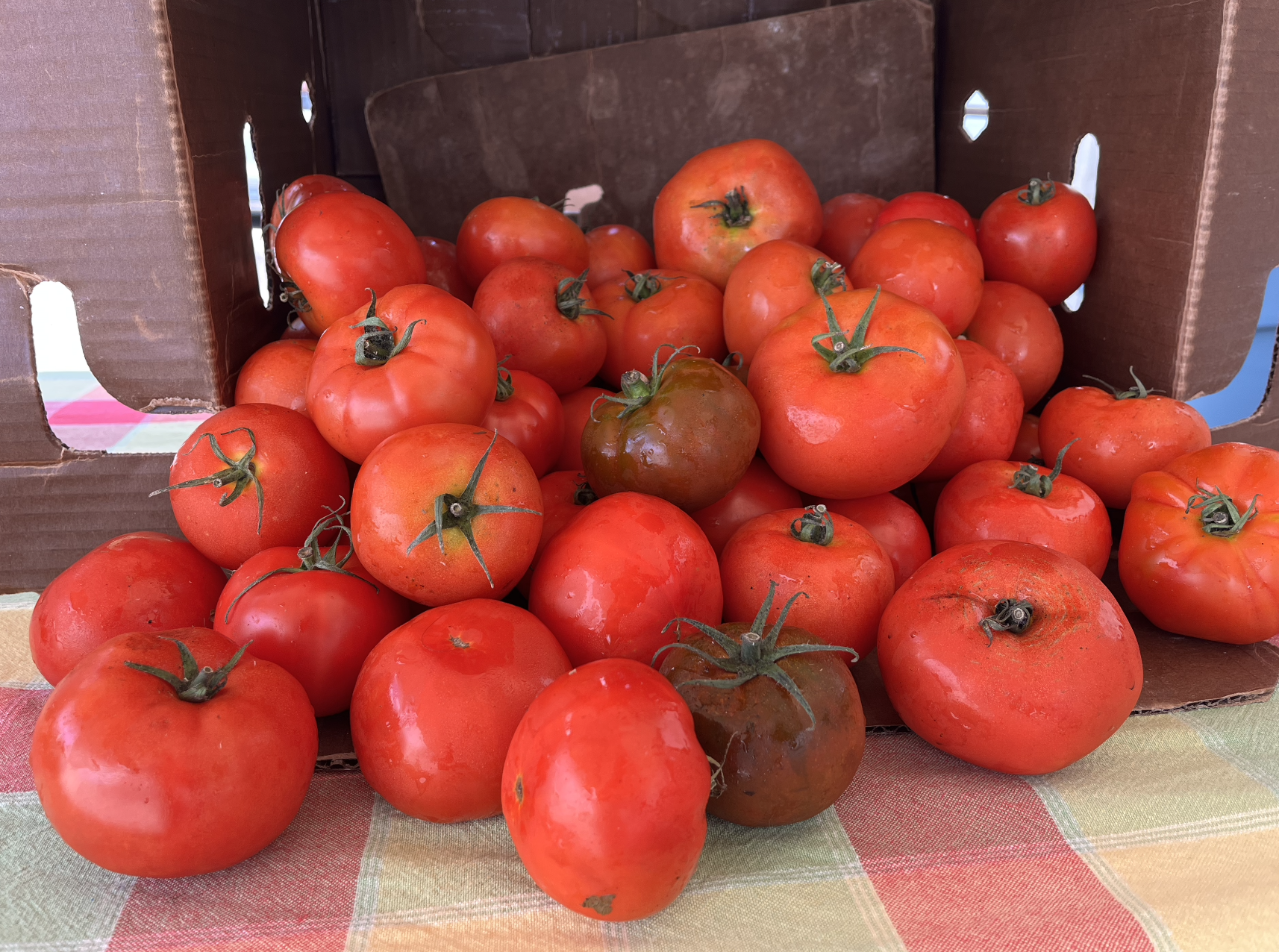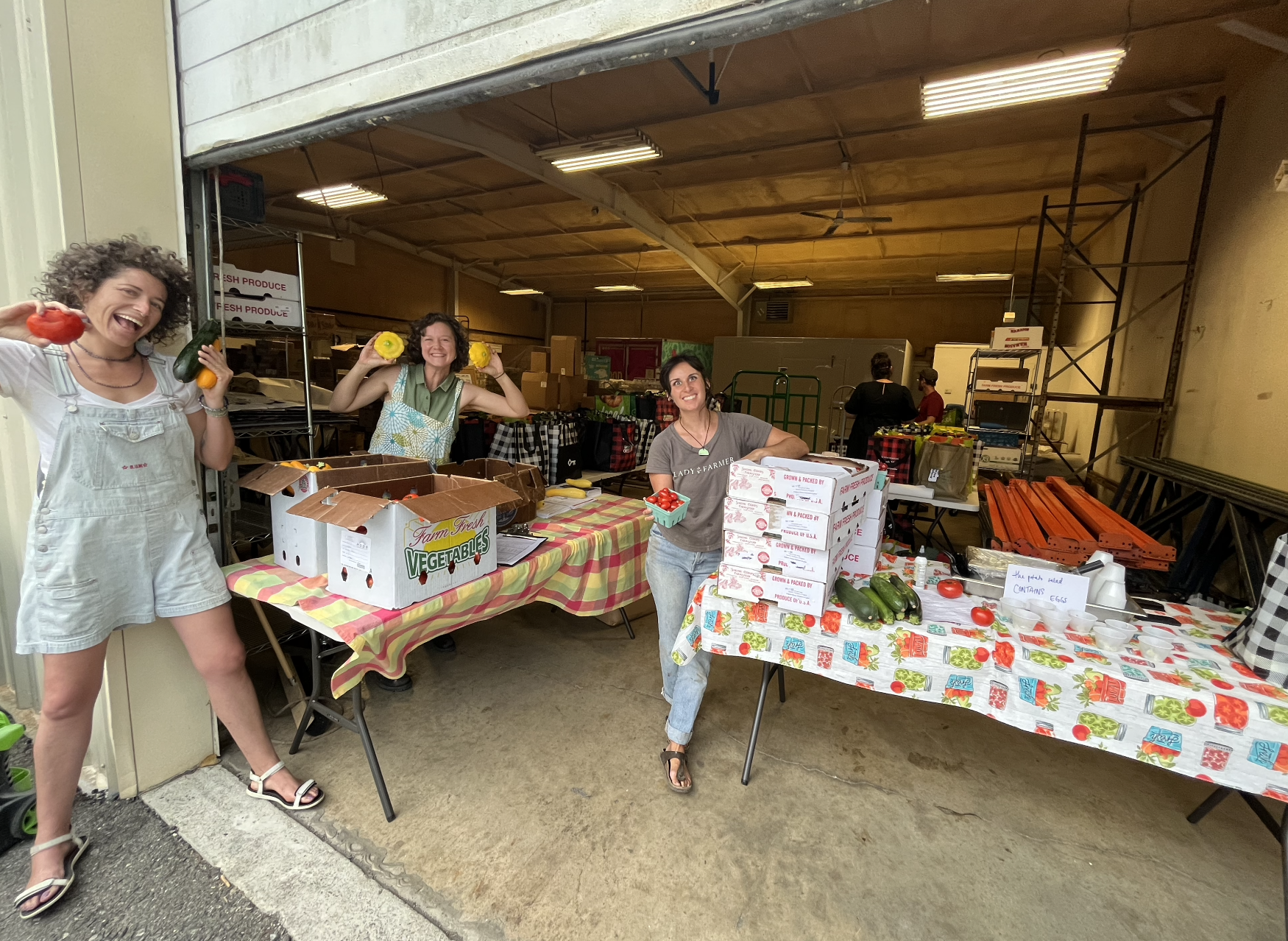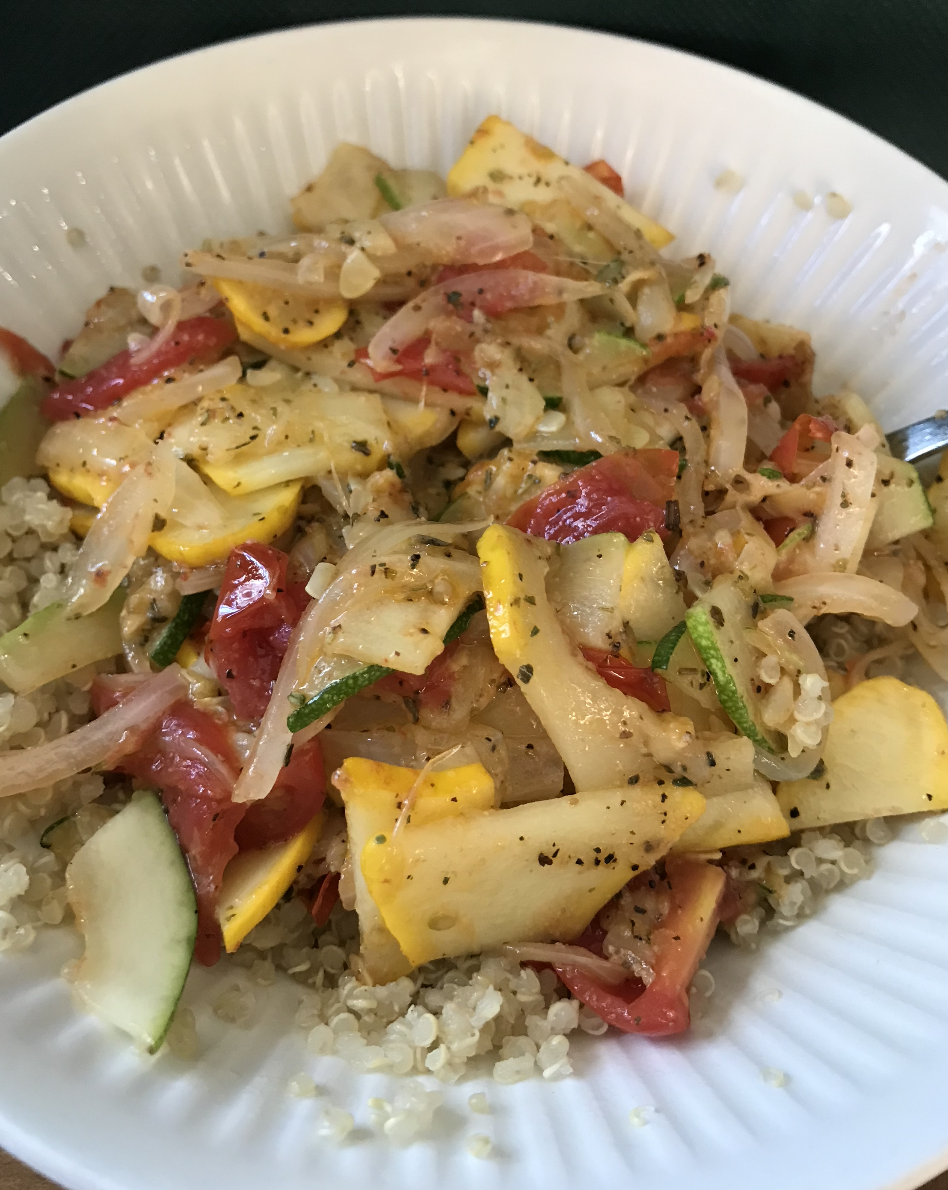Food, Labor and Community: A Conversation with American Flatbread Head Chef Samantha Langevin
/Samantha Langevin is the head chef at American Flatbread in Middlebury, where she thinks deeply about what it means to support local food and her community.
By: Jessica Buxbaum, ACORN Summer Intern
With locations across five states and a line of frozen pizzas available at the grocery store, American Flatbread could be written off as just another pizza chain. But Samantha Langevin, head chef at Flatbread’s Middlebury location, tells an entirely different story.
She arrived at American Flatbread through a love for food. Raised in Vermont in a single-parent household, she recalls learning to cook for herself, shop economically and eat adventurously. After studying comparative literature in college, she had planned to go to graduate school, but her priorities changed after landing an internship and then a job at Hidden Villa in Los Altos Hills, California -- a 1600-acre wilderness preserve, fully-functioning organic farm, and site for experiential education.
She spent eight years at Hidden Villa, where she learned the value of working with her hands, developed a love for environmental education, and met her current partner, before moving back to Vermont.
Now, in addition to running a kitchen and honing her skills as a chef, she thinks deeply about issues in the food system. I spoke with her about the restaurant’s position within Vermont’s food system, labor in the food industry, the value of supporting local food in Vermont, and much more.
Questions and answers have been edited for clarity and concision.
Explain your transition from Hidden Villa to American Flatbread.
By the end of my time working at Hidden Villa, I was not only doing education around food, agricultural and environmental science, as well as culinary science, but was doing a lot catering on the side with produce from the farm for facility rentals like weddings and retreats.
When I moved back to Vermont and was looking to concentrate more on food as a career, I was approaching it from wanting to be adventurous with my eating, really enjoying cooking, and this environmental education background.
I worked in a variety of places, but when I came to Flatbread, it felt like the right fit. There’s a certain kind of ethos around food and community here that is very much in line with both my upbringing and what I had learned and experienced at Hidden Villa.
What role do you think restaurants play in food systems, generally speaking?
Because restaurants are preparing the food and produce, there’s a lot of influence restaurants have on how people think about and use certain foods. For example, if someone sees kohlrabi at the grocery store and they’ve never had it before, the chances of them eating it are pretty slim because it looks strange and they aren’t even sure what to do with it. But, they might order something in a restaurant with kohlrabi and think, “That’s delicious, what is that?” So there’s this place for education through exposure.
What role do you see American Flatbread playing in Vermont’s food system, specifically?
I came into a great situation at Flatbread in that, when I started working here, we already had a lot of great established relationships with local food producers. The owners really recognize the value of supporting local economies, so, when it comes to deciding how we’re managing food costs, there is an understanding that we are going to spend more to support local agriculture or support organic food. It’s a balance, and you can’t do that all the time, but in a place like Vermont, it’s not just about economics -- It’s also about the people in your community.
On the other side of that, we’re lucky that Vermont is a place where that kind of intentional sourcing is a selling point. Orb Weaver is a good example of this. If Orb Weaver’s farmhouse cheese is on a flatbread, we know there are people who are going to buy it just because they love that cheese. People recognize local food and get excited about it.
What do you see as the biggest weaknesses or vulnerabilities in our food systems?
A huge percentage -- something like 60 percent -- of the produce in the U.S. comes from California. Thinking about the effects of climate change on the state of California, how reliant we are on migrant labor to pick that produce, and prices for transportation which we really feel on the East coast, that is a huge area of weakness within our food system.
Vermont is lucky that we have a lot of support for local food, but we also have a long winter and the restaurant has had to scramble when things have happened in other parts of the country or the world. There was one winter, for example, when a case of celery hit $100, and it meant that we had to pull it from our house salad.
Another area of weakness is that we don’t often pay the true cost of food. There’s an education piece to that -- people that can afford to pay the true cost don’t think they should have to because they don’t realize what it actually costs to produce food. There’s also an equity part -- the perception is that if you use social services or you're low income then you should be pinching your pennies, and there isn't a perception that you should have access to fresh produce.
How do you think labor in the food industry factors into how people value food?
To start with labor within food service, it is really hard to work in a restaurant regardless of what position you’re in. I think there’s a perception on the consumers’ side that it’s not a real job unless you’re a chef, in which case you should be working crazy 80-hour work weeks. We are constantly hiring; we can never keep people in even though we pay well, we have nice benefits and we treat our staff really well. I think it’s because people don’t see working in a restaurant as a viable career.
And then on the agriculture side -- oh, man. Here’s what I’ll say: we treat water, soil, seeds and manure as resources, but we don’t treat people as resources when it comes to agricultural production. That’s a very general comment, but I think the dairy industry in Vermont is a great example. There’s a lot of migrant labor that supports our dairy industry. Those are super hard jobs with crazy hours, but it’s still this unacknowledged part of how our state is an agricultural state.
Do you see these issues in the food service industry and the agricultural industry as being related?
I think both are affected by how we perceive jobs that are service-based. We place high value on certain professions, and we pay them and treat them accordingly. If food was more expensive, if you had to pay servers better, then we might treat workers in restaurants and in agriculture a little better, too.
We have this perception that food should be cheap, so we don’t even think about who’s providing that food and how they should be paid.
What will it take to change how people value food and labor in the food system?
Culturally, we have to perceive manual labor differently. Working in a field and working in a restaurant -- both of them, you could say, are products of your hands. Something like being a lawyer is a product of your mind. Both are necessary in our society, both have value, but I think we don’t always perceive something that demands physical labor as having the same worth.
One thing many employers can do is treat employees better, whether that’s at a farm or in a restaurant. Changing individual workplaces from within is really important.
Vermont is home to many small, sustainable local producers, but it also is home to plenty of larger, industrial farming operations, as well. In this context, what does buying local mean to you?
If we’re going to serve something here and call it “local,” it’s usually from Vermont. If it’s from outside Vermont, it’s made primarily with Vermont ingredients or it’s from just over the Vermont border. We consider it all part of our local food system, and that includes industrial dairy.
For example, the quantity of eggs that we use means that we buy them from a large production facility based in Vermont. We still list that as a local product because it’s still supporting local producers, local jobs, the local economy. I think that’s still of value even if it’s not the small-scale organic productions that we think of when we hear the word “local.”
Plus, I think by supporting those local businesses and industries, we’re in a better place to work with them on changing for the better.

